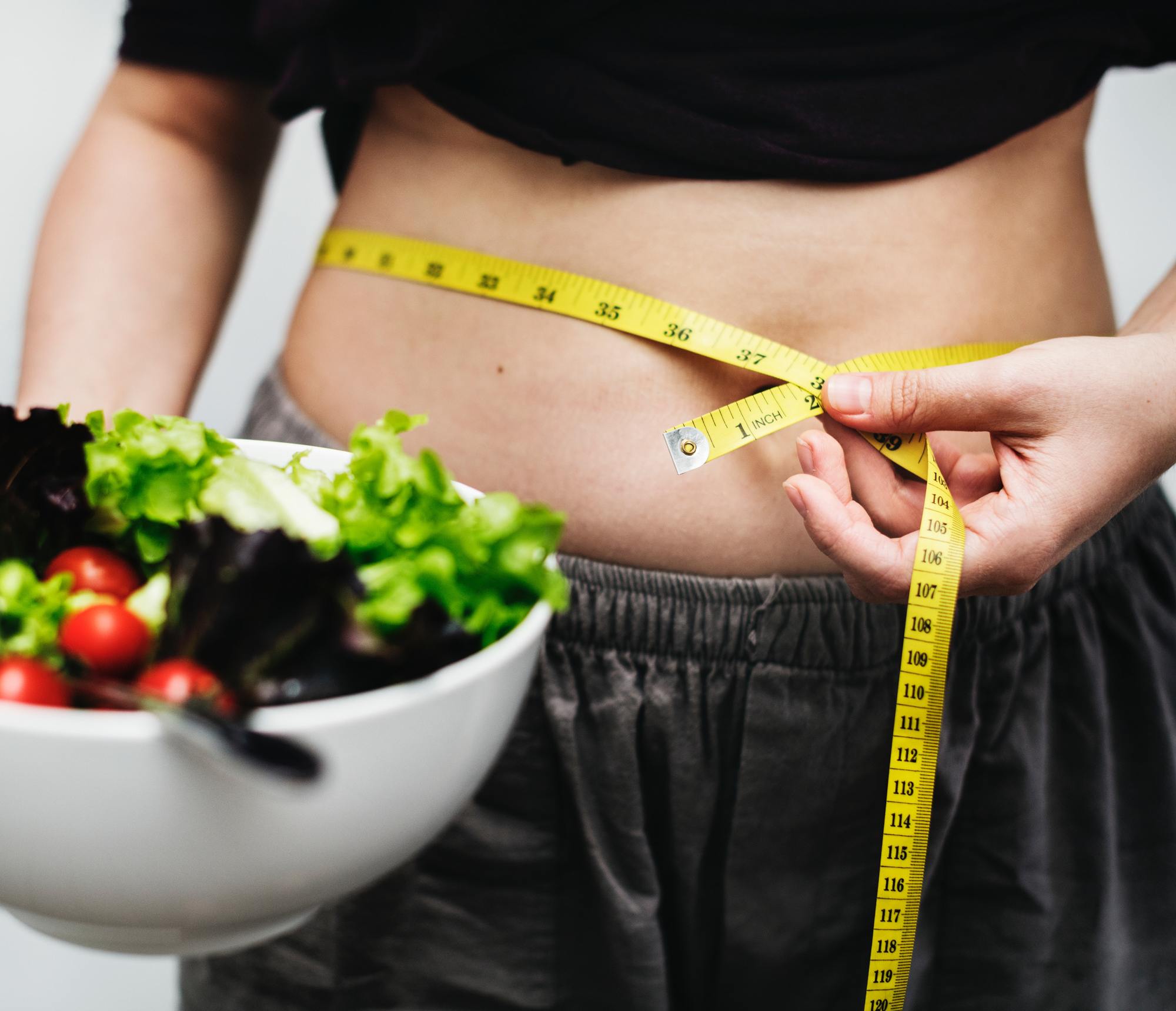‘28-day detox’, ‘2-day juice cleanse,’ ‘lose up to 10kg in time for summer…’
Now, I am sure you’ve heard these before and hey, you might have even tried what they’re trying to sell you because let’s face it – it’s incredibly persuasive and some of it actually does sound good! However,
But have you ever wondered how reliable are these claims are? Are they sustainable long term? Are they really interested in your health outcomes?
The reality is, some of these programs aren’t invested in your health, they just sell a diet or program is popular or trending, in order to make money and it’s just a bonus if you get some benefits out of it as well.
How many times have you dieted and just haven’t found results like they claim, or it just isn’t sustainable or fits in with your lifestyle? Well you’re in luck, this post will give you everything you need to get started with your weight loss journey that is sustainable and can fit in with YOUR lifestyle.
Back to basics
First let’s get back to basics. What is needed for weight loss?
Energy in = Energy out
We have a scientific equation which is called ‘energy imbalance’. Essentially it is made up of two components; energy in and energy out. Energy in being the calories your body takes in through consumption of food and drink and energy out meaning the calories your body uses through daily activities such as walking and breathing (yes, our body burns calories breathing).
Weight gain can happen when we disrupt this balance by either consuming more energy than our body expends or expending less energy than what we put into our body. It’s a balancing act which can go both ways – if we consume less energy than we expend, than we can see weight loss start to happen.
Now what?
Tip #1: Start with a goal.
So now that you understand how weight loss happens- what can you do next? Well, starting with a weight loss goal is important.
But, before you write down your magic number, you need to consider a few things first.
- Is this goal achievable?
- Is it realistic?
Scrap your 20kg in a month idea – it’s not going to happen, and you will end up being disappointed that it didn’t happen and that’s because it isn’t realistic or achievable.
Your weight loss goal needs to be ‘SMART’- Specific, measurable, achievable, realisticand timely.
Steady weight loss of about 500g to 1kg is a realistic weight loss rate. Everyone loses weight at different rates but if you start with this, it is a great starting point.
Now with this in mind, use these the following to help you determine a goal that is right for you:
- Specific: What exactly are you trying to achieve? Use figures if you can.
- Measurable: How will you measure this to determine if it’s achieved?
- Achievable: Something that you are actually able to accomplish.
- Realistic: Something that is possible for you to achieve in the time frame listed
- Timely: Give your goal a time frame so you know when to check in.
You’ve set your goal and you’re determined to get started. So, what can we do to achieve this?
2# Food
Be careful of fad diets. These types of diets often promise fast weight loss without any scientific basis. These diets often cut out entire food groups which may mean you’re missing out on important nutrients which can lead to deficiencies or they may actually even hinder your weight loss.
We want to avoid any diets that cut out entire food groups or specific nutritious foods like carbohydrates and those who focus on focus on short term changes to eating and exercise habits. Most importantly steer clear of those who encourage miracle pills and potions!
What we want to do is have a balanced, wholesome nutritious diet. Heard of the Australian Guide to Healthy Eating? This is based off our Australian Dietary Guidelines which promotes eating a wide variety of foods from all food groups including:
- Breads and cereals:Wholegrain bread, cereal, wraps, rice and pasta
- Vegetables:Spinach, carrot, pumpkin, tomato, capsicum- there are so many!
- Fruit:Apples, pears, bananas, strawberries- pick in season for affordability.
- Dairy:Low fat milk, cheese and yoghurt or calcium fortified dairy alternatives like soy milk
- Meat or alternatives: Lean cuts of chicken, beef, pork or veal, fish or meat alternatives like tofu, lentils, kidney beans
These food groups should make up a large proportion of your diet and aim to meet your recommended serves of these foods so you get all of the essential nutrients your body needs.
Here are some tips for eating healthy while trying to lose weight:
- Eat, and eat regularly: It’s essential to recognise and act on your hunger and satiety cutes your body gives. Aim for a regular eating pattern of meals, or meals and mid meals as you’ll be more likely to include the recommended number of serves from the five food groups whereas a spontaneous, unstructured eating pattern is more likely to include too many foods which are high in saturated fat, added sugars, added salt and kilojoules which can hinder weight loss.
- Eat breakfast: Heard that saying, it’s the most important meal of the day? Well it is. Having breakfast gets everything working and moving for the busy day ahead and it may hold you from buying extra food at morning tea and overeating at the next meal.
- Eat with other people, not in front of the TV or other screen-based equipment: If you eat with others and eat at the dining table you are more likely to recognise hunger cues than in front of the TV as your mind is solely invested in your meal. Meals in front of the TV may lead to overeating without even realising which can hinder weight loss.
- Take emergency snacks: Be prepared for those days where you are out longer than anticipated or held up in traffic. Take extra snacks and put them in your car or handbag. Include snacks such as fresh fruit, nuts and seeds or a muesli bar packed full of fibre to keep you going until your next meal.
3# Get moving
Remember the equation energy in vs energy out? Well in order for effective and sustainable weight loss to happen, we need to get moving.
It is recommended adults achieve at least 30 minutes of moderate to vigorous exercise every day. While it may seem like a challenge at first, find something you enjoy doing and stick to it! Exercise shouldn’t feel like a chore and if you find yourself feeling like this stop and think.
If we aren’t enjoying what type of exercise we’re doing, we won’t put 100% into it and then you may feel unmotivated and could quit all together. And then you become disappointed with yourself and it becomes this vicious cycle. But when we enjoy exercise it’s a complete 180 difference. Here are some useful tips to get yourself moving:
- Split it up: You can split up your exercise over the day. For example, you could do: 3×10 minute blocks or 2×15 minute blocks. If you’re time poor this is a great way to get your exercise in.
- Try something new: Exercising doesn’t have to be gruelling gym sessions or PT for that matter. Try something new and see what you might enjoy. Go for a Zumba class, try a Pilates or yoga or spin cycle class. Do anything that gets you moving and stick to it.
- Incidental exercise: This can be a great way to get moving anytime of the day and you won’t even know you’re exercising really. Try these healthy swaps:
- Take the stairs over the lift or escalator
- Park far away from the shops and walk (you’ll save time as you won’t be scrambling for a park nearby)
- Put your trolley back- it’s something so easy but walking your trolley back to the trolley bay or even back into the shop will help get some extra steps in and you’ll also be thanked by a lot of people
- If you catch public transport- get off one stop early and walk to your destination
4# Track progress
While weight loss is your primary goal, don’t forget about the other important changes that might be happening along the way. If you aren’t seeing much change in the scales it can be quite unmotivating but don’t forget about these amazing milestones to help you keep you on track:
- Drop in body measurements (such as waist circumference down by 5cm)
- Drop in clothes size or notch on the belt (such as going from size 18 to 14)
- Improvement in health (such as reduced blood pressure, cholesterol, better blood glucose control in diabetes, reduction in medications)
- Feeling more energetic
- Able to walk around or up and down stairs without losing breath
- Feeling more comfortable or getting the confidence to do something you’ve avoided for a long time (such as going to the beach or pool in your swim wear)
- Sleeping better at night, no longer snoring or needing a C-PAP machine.
5# Enjoy yourself
When you have a SMART goal, are eating healthily and exercising regularly it should be a lifestyle change and not just some quick fix. Your weight loss journey should not be a punishment either and you can still enjoy your food! Establishing a positive relationship with food will improve your mental thoughts surrounding food. When we demonise or restrict certain foods, we often attach negative associations with these foods which can hinder our weight loss journey. When this happens, we often binge on these foods, feel guilty about it and even fall off the wagon only to start again on ‘Monday’ or in a few weeks’ time and then we are caught in a cycle.
But food shouldn’t be demonised nor restricted. Enjoying a balanced diet of wholesome and natural food can keep us on track. Food brings people together and is a social celebration for many of us. You don’t need to eat less- just enjoy a balanced diet!
For specific, tailored advice that suits your individual lifestyle, speak to one of our Dietitians.








It looks easy and useful tips which would be really helpful for me to achieve my weight loss goal. I will keep these all tips in mind. Thanks and keep sharing.
Glad we could help you!
Hey there, This was very informative article with beautiful content, I would love to read more of this content in the coming days. Thanks for sharing.